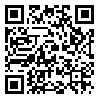Volume 17, Issue 100 (2020)
FSCT 2020, 17(100): 17-28 |
Back to browse issues page
Download citation:
BibTeX | RIS | EndNote | Medlars | ProCite | Reference Manager | RefWorks
Send citation to:



BibTeX | RIS | EndNote | Medlars | ProCite | Reference Manager | RefWorks
Send citation to:
Askari Asli Ardeh E, larijani M R, Loni R. Diagnosis of Rice Blast Disease in Different Environmental Conditions using Image Processing Technique. FSCT 2020; 17 (100) :17-28
URL: http://fsct.modares.ac.ir/article-7-39272-en.html
URL: http://fsct.modares.ac.ir/article-7-39272-en.html
1- university of mohaghegh ardabili , ezzataskari@uma.ac.ir
2- university of mohaghegh ardabili
3- Postdoc Researcher, Department of Biosystems Engineering, Tarbiat Modares University, Tehran, Iran
2- university of mohaghegh ardabili
3- Postdoc Researcher, Department of Biosystems Engineering, Tarbiat Modares University, Tehran, Iran
Abstract: (4121 Views)
The purpose of this study was to evaluate the image processing technique in rice blast disease detection in field and controlled conditions. Using MATLAB software, images taken from field and controlled conditions were processed in three RGB, HSI and LAB color spaces. Then it was extracted by the gray area intensity profile, color properties, and threshold value for background image removal. After removing background in RGB, HSI and LAB color spaces, disease spots on rice leaf were determined. In RGB color space, by subtracting arrays by test and error, the blast patches on the leaf were separated from the rest of the image pixels. Hue was used in the HSI color space because this component was independent of light intensity variations, so blast blot identification was performed more accurately than the S and I components. In the LAB color space, the Kmeans clustering algorithm was used to segment the images into three clusters and was displayed in an independent cluster after labeling the image of blast disease spots. Finally, in order to determine the performance of the algorithms designed in three color spaces, the sensitivity factor, specificity and total accuracy were tested on the basis of the perturbation matrix for 500 image samples. In field and controlled conditions, the highest accuracy in detecting blast blots in the LAB color space was 94% and 98%, respectively. Overall, the results showed that the image processing method can be used to detect rice blast disease.
Article Type: Original Research |
Subject:
food industry engineering
Received: 2019/12/23 | Accepted: 2020/03/9 | Published: 2020/05/30
Received: 2019/12/23 | Accepted: 2020/03/9 | Published: 2020/05/30
Send email to the article author
| Rights and permissions | |
 |
This work is licensed under a Creative Commons Attribution-NonCommercial 4.0 International License. |







